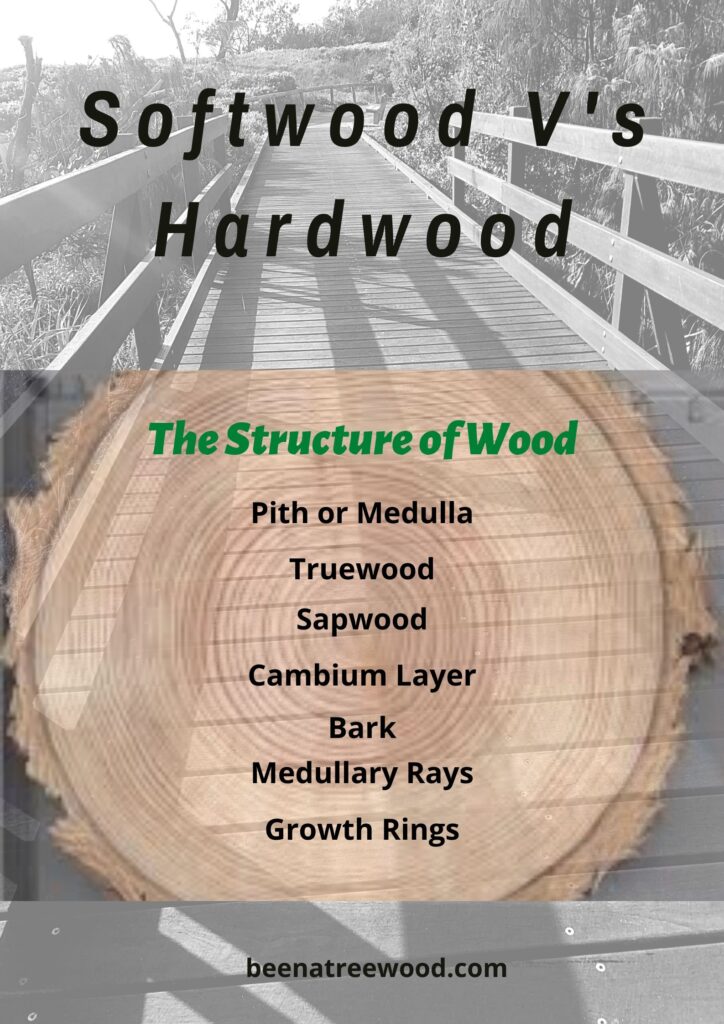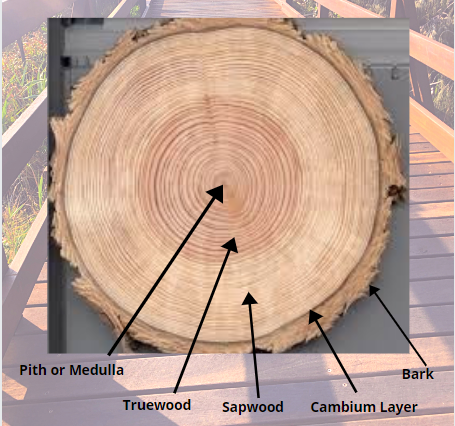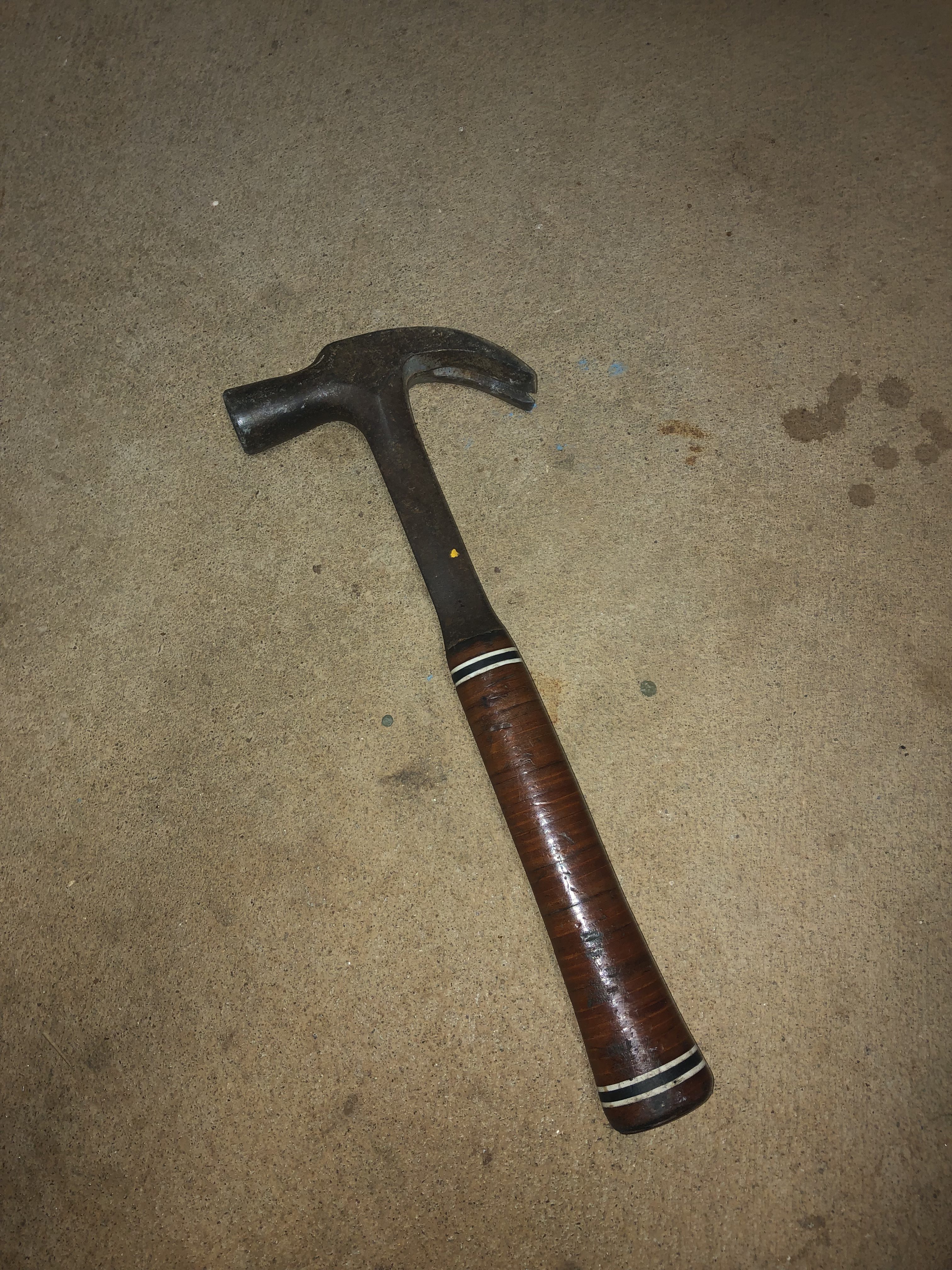Difference between Hardwood and Softwood
Before we get into the difference between Hardwood and Softwood, we need to understand the structure of wood (Timber).
Timber is used for construction in both structural building, like building the structure for a house, and used in the construction of furniture.
What is The Difference between Timber and Wood?
Timber is the result of wood being processed into usable timber, whether rough sawn or dressed – beams, posts, trims and other milled profiles.
Wood is the tree structure that is the hard-fibrous tissue that support trees and enables the tree to grow.
What is The Structure of Wood?
Wood is made up of several cells, each having a function for growth. If you were to cut a tree across the trunk the structure from the centre goes like this,
- Pith or Medulla is the centre (Heart) of the tree which transports the sap in young plants. It is composed of soft, spongy cells which transports the nutrients and is generally darker in colour.
- Truewood (Heartwood) is the next layer out which surrounds the pith and the cells are actually dead. Most of the timber for building comes from this area. Truewood is dark in colour and harder than the pith. Blockage often occurs with food being stored within the cells and this converts into tannins and resin.
- Sapwood being the next layer out and surrounds the truewood, softer, lighter in colour and transports the nutrients from the roots to the leaves.
- Cambium Layer surrounding the sapwood and directly under the bark is a thin layer of cells which are naked to the eye. It forms new bark on the outside and new sapwood on the inside. This forms the growth rings for the previous year’s growth.
- Bark is the outer layer of the tree trunk and is made of two sections. The outer layer is the dead bark that can be seen with the inner layer of the bark transporting the food from the leaves to the cambium layer.
- Medullary Rays are the bundle of cells that run across the above structures from the cambium layer into the pith. These cells store sap food that is transferred to the inner growth areas of the tree.
- Growth Rings are produced during the growing period of the tree for that year. As the tree grows in width and height, new wood grows in the cambium layer. Measuring the distance between these rings can measure the trees annual growth for that period. During the slower growing months, the cells are more compacted giving the darker appearance. During the faster growing period, the cells are larger with thinner walls giving the lighter appearance. These can be counted to give you an idea of how old the tree is.
The difference between Hardwood and Softwood
Wood is made up of different cells and is grouped into two groups depending on the cell make-up.
- Non-Porous Timber (Softwoods)
- Porous Timbers (Hardwoods)
Softwoods
Softwoods are a versatile timber.
Softwoods are timbers without vessels. These timbers mainly have one type of cell that has a dual function, transporting the sap (nutrients) to the leaves and supporting the tree.
Due to them being non-porous they rely on their medullary rays to transport nutrients for growth.
The cells are smaller is size and are arranged in uniform, with less variations visible.
Softwoods come from conifer trees which are evergreen with cone or needle like leaves.
Advantages of Softwood
- Easy to work with – With their cell structure being uniform in arrangement provides a timber that is easy to work with. It also offers a wide range of applications that it can be applied to.
- Sustainability – Softwood trees can be planted to provide a renewable resource with its ability to grow faster than hardwoods.
- Cost to buy – Softwoods are generally cheaper to buy as they are easier to source.
Softwoods can be used to produce beautiful finishes in feature walls and ceilings, furniture, doors, windows and is a versatile building material.
Disadvantages of Softwood
- Density: The lower density of softwood timber means it is weaker and less durable, however there are some ‘hard’ softwood options with a higher density like Juniper and Yew.
- Longevity: Softwood is less suitable for high traffic areas as it does not wear as well as hardwood over time.
- Fire resistance: Softwoods tend to have poor fire resistance unless treated.
Common types of Softwoods
Types of softwoods include Pine (Hoop, Radiata, Cypress), Douglas Fir, Western Red Cedar and Redwood.
What Softwoods are used for
Softwood are mostly used for cladding, flooring, structural framing, decking, panelling, poles, beams, benchtops, cabinets and furniture.
Hardwoods
Hardwoods are known for their strength and look.
Hardwoods, unlike softwoods have vessels. Hardwoods mainly have two types of cells – Vessels and Fibres.
Vessels are arranged to form long tubes running up the tree to transport the sap. These vessels can be seen then the timber is crosscut.
The fibres make up the thick walls around the vessels that support the tree.
The vessels that transport the sap allow the remaining timber grain to become denser, which is the reason they are usually harder and heavier than softwoods.
Advantages of Hardwood
- Strength and Durability – Hardwood produces a very high-quality product that offers great durability over time. The dense cellular structure gives the timber it’s strength. It is suitable for a large range of applications in including construction, joinery, high-quality furniture and flooring.
- Easy maintenance – Hardwood is easy to clean, and scratches and dents can be fixed. This type of wood is commonly used in general joinery, flooring, cladding and staircases.
- Appearance – Hardwood timber has some amazing features and colours. It provides a warmth like no other timber.
- Fire resistance – Hardwood timber offers a higher fire resistance than softwood.
Disadvantages of Hardwood
- Slow growth – Unlike softwood, hardwood forests take longer to replenish due to the tree’s slower growth rate.
- Hard to Work with – Due to its density, hardwood tends to be a lot harder to work with during construction. The cell structure being more complex make it harder to work with. Something commonly called cranky grain. The timber is also a lot heavier than softwood. Hardwood gets harder as the timber ages.
- Cost to Buy – Hardwoods are generally more expensive. This is generally offset by its strength, looks and performance
Common types of Hardwoods
Types of hardwood include Blackbutt, Brushbox, Rose Gum, Ash, Cherry Wood, Hard Maple, Jarrah, Ironbark, Spotted Gum and Hickory.
What Hardwoods are used for
Hardwoods are generally used in furniture, structural construction, flooring, decking, fencing, panelling and in some applications of boat building.
Conclusion
Understanding the structure and properties of hardwood and softwood will enable you to be able to select the right timber for the project you are wanting to complete.
It also helps when working with the timber to understand when, why and if the timber you are working with will react in a certain way.
Reading the grain (Cells) help when planing, dressing and cutting the timber. It also helps when you prepare the timber and arrange how pieces will be constructed and worked with.
It will also give you an understand of the effects that shrinkage could have on the cut of material. You need to ensure, particularly with hardwood flooring that the timber is seasoned.
Whatever your project, selecting the right timber to use between hardwood and softwood will be crucial with achieving the look you are after, work-ability of the timber and its durability.
Happy Woodworking
Regards
Ben





I like the valuable info you provide in your articles.
I’ll bookmark your blog and check again here frequently.
I’m quite certain I will learn plenty of new stuff right
here! Best of luck for the next!
My homepage … Royal CBD
Thank You